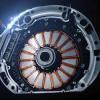
Breaking News
 Operation Mockingbird: The CIA lied to you this whole time
Operation Mockingbird: The CIA lied to you this whole time
 American Academy of Pediatrics threatens PARENTAL RIGHTS with federal mandates...
American Academy of Pediatrics threatens PARENTAL RIGHTS with federal mandates...
 Texas AI data centers drain water supply as residents face drought restrictions and shower limits
Texas AI data centers drain water supply as residents face drought restrictions and shower limits
 SpaceX's Crew-11 astronauts arrive at the International Space Station (video)
SpaceX's Crew-11 astronauts arrive at the International Space Station (video)
Top Tech News
 The mitochondria are more than just the "powerhouse of the cell" – they initiate immune...
The mitochondria are more than just the "powerhouse of the cell" – they initiate immune...
 Historic Aviation Engine Advance to Unlock Hypersonic Mach 10 Planes
Historic Aviation Engine Advance to Unlock Hypersonic Mach 10 Planes
 OpenAI CEO Sam Altman Pitches Eyeball-Scanning World ID to Bankers
OpenAI CEO Sam Altman Pitches Eyeball-Scanning World ID to Bankers
 New 3D-printed titanium alloy is stronger and cheaper than ever before
New 3D-printed titanium alloy is stronger and cheaper than ever before
 What is Unitree's new $6,000 humanoid robot good for?
What is Unitree's new $6,000 humanoid robot good for?
 "No CGI, No AI, Pure Engineering": Watch Raw Footage Of 'Star Wars'-Style Speeder
"No CGI, No AI, Pure Engineering": Watch Raw Footage Of 'Star Wars'-Style Speeder
 NASA's X-59 'quiet' supersonic jet rolls out for its 1st test drive (video)
NASA's X-59 'quiet' supersonic jet rolls out for its 1st test drive (video)
 Hypersonic SABRE engine reignited in Invictus Mach 5 spaceplane
Hypersonic SABRE engine reignited in Invictus Mach 5 spaceplane
 "World's most power dense" electric motor obliterates the field
"World's most power dense" electric motor obliterates the field
 The Wearables Trap: How the Government Plans to Monitor, Score, and Control You
The Wearables Trap: How the Government Plans to Monitor, Score, and Control You
Graphene used to make stronger, greener concrete

To make the concrete, a team from Britain's University of Exeter devised a technique of suspending flakes of graphene in water, then mixing that water with traditional concrete ingredients such as cement and aggregate. The process is reportedly inexpensive, and compatible with modern, large-scale manufacturing requirements.
When tested, the graphene-enhanced concrete was found to have a 146-percent increase in compressive strength as compared to regular concrete, a 79.5-percent increase in flexural strength, and a decrease in water permeability of almost 400 percent. The material meets British and European standards for construction.



